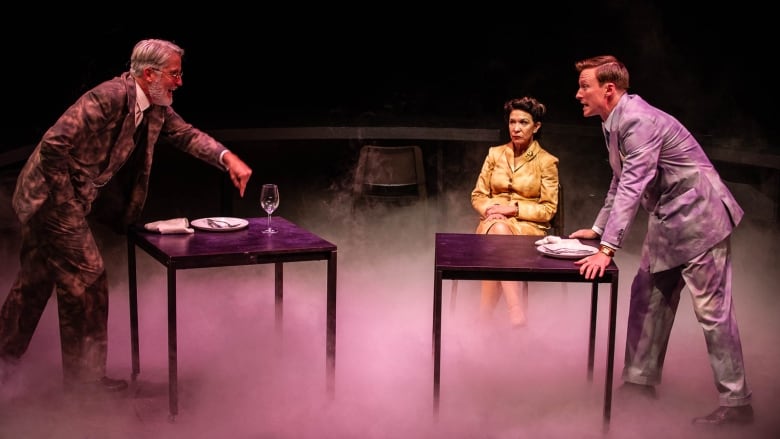Theatre and physics entangled
Theatre and Physics might seem to most as two completely different worlds; on the one hand we have an artistic expression, filled with emotions, while on the other hand there is the cold logic of science, trying to explain the mysteries of the universe.
Apparently, nothing is black or white in life, but rather lots and lots of shades of grey. When we bring art and science together, the results are extraordinary. It is well documented that many pioneers of science were also very interested in the arts, mostly in music and painting. On the other hand, artists are using scientific concepts as inspiration to express themselves and show their truth to the audience.
I recently listened to a CBC Ideas podcast hosted by Nahlah Ayed about the connection between physics and theatre. The episode discussed a recent project organized by the National Arts Centre in Ottawa, Canada called “Theatre and Physics symposium”, which goal was to explore the connections between quantum physics and human interactions. The symposium took place last November, and some interesting panels from it such as: “The “I” in Physics: The Inner Lives of Physicists”, “Mind and Matter” and “The nature of uncertainty” are available on demand at the NAC website.
The podcast episode is split in two parts; in the first, they discuss Michael Frayn’s play “Copenhagen” (Fun fact #1 - I have first watched it as a 3rd year undergrad student in Greece and Fun fact #2 two of the actors that have portrayed Heisenberg in adaptations of the play are Benedict Cumberbatch and Daniel Craig). The play is based on a historical meeting between Werner Heisenberg and Niels Bohr in 1941, that took place in Copenhagen during its occupation by the Nazis. The ideas about nuclear fission and chain reactions have started to spread among physicists and according to the story, Heisenberg, who was the head of the German nuclear bomb project, visited his mentor Bohr to ask him if he knows anything regarding the progress of the Allies regarding their bomb.
According to Heisenberg, in his autobiography “Physics and beyond” and also in his interviews for Robert Jungk’s “Brighter than a Thousand Suns”, he doesn’t explain the reason of this visit. Interestingly, after the war Heisenberg tried to portray himself as a pacifist that even though he was capable of creating a bomb, he deliberately delayed the project’s progress out of ethical concerns. However, later declassified data from after the war showed that he was extremely surprised when he learned that the Allies managed to create the bomb. For more information regarding the meeting, I recommend the article by David Cassidy titled “A historical perspective on Copenhagen”.

In the second part of the episode, there is a discussion regarding the connections between psychoanalysis and quantum mechanics based on the play “Entangled” by Jacob Berkowitz. “Entangled” explores the dynamic of Carl Jung, the father of analytical psychology and the great theoretical physicist Wolfgang Pauli. Jung was Pauli’s psychoanalyst for many years and the two men developed a deep connection. Pauli actually asked for Jung while being in his deathbed in late 1958. There are many books documenting the relationship between Pauli and Jung, my favourite one being “137: Jung, Pauli, and the Pursuit of a Scientific Obsession” by Arthur Miller. Pauli had really vivid dreams that was sharing with Jung during their sessions. One of the great ideas of Jung, synchronicity, was influenced by the non-locality aspect of quantum theory and more specifically, quantum entanglement.
I really enjoy the use of artistic expression to make science accessible to a wider audience. As a grad student I participated in a four-month virtual residency program called “The Bridge”, which goal is to bring scientists and artists together to discuss and collaborate. You can read more about it here.